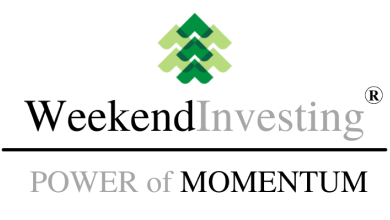Where is the market headed?
President Trump’s fresh statement on imposing an additional 10% tariff on countries associating with BRICS has added to the uncertainty. The India–US tariff deal remains incomplete, with only a mini deal in progress—agriculture and dairy excluded for now.
Markets were mildly negative in the first half, but Nifty recovered later in the day. Overall, it remained a dull session, as investors await clarity on global trade developments and the upcoming earnings season.
Market Overview
Absolutely flat close for Nifty — not even a 0.05% move in either direction. The index showed no momentum, reflecting a completely directionless session.

Nifty Next 50
Nifty Junior is up 0.17%.

Nifty Mid and Small Cap
Mid-caps slipped 0.26%, while small-caps were down 0.2%. Overall, there was no significant action in the broader market either.


Bank Nifty
Nifty Bank is down 0.15%.

GOLD
Gold is also down 0.41%.

Advance Decline Ratio
The session saw a clear tilt towards the declining side. Although declines spiked earlier in the day and eased slightly later, the final tally stood at 200 advances and 300 declines, indicating a weak market breadth by close.

Heat Maps
The FMCG pack led the gains, with Hindustan Unilever up 3%, Nestlé 1.2%, Tata Consumer 1.1%, and ITC up nearly 1%—likely buoyed by relief that agro and dairy are excluded from the US-India tariff deal. Reliance also gained 0.93%, along with Maruti, Airtel, Kotak Bank, and Bajaj Finserv.
On the flip side, IT and energy stocks witnessed some losses. Despite a new ₹2 lakh crore defence order announcement, Defence stocks remained muted, suggesting possible consolidation. In the Nifty Next 50, FMCG names like Dabur, Britannia, Varun Beverages, and Godrej CP performed well.
Notable laggards included Havells (-2.54%), IRFC, Chola, REC, Naukri, and Bajaj Housing. Meanwhile, IOC and BPCL posted gains within the oil & gas space.


Sectoral Overview
No surprises — FMCG led the day with a 1.68% gain, emerging as the strongest performer. However, on a broader horizon, the sector has underperformed all year, down -3.5% over one year, -1.8% over six months, and only +4% over three months. If today’s rally sustains, it could mark the beginning of a turnaround.
Other notable gainers included MNC stocks and Consumption, both up 0.5%, and oil & gas, up 0.4%.
On the losing side: Defence,Media, IT, Central PSUs, Metals, and Tourism saw mild corrections.
The broader trend suggests a tentative shift, with FMCG finally showing signs of revival.

Sector of the Day
Nifty FMCG Index
The FMCG index rose 1.68%, signalling a potential revival after a prolonged phase of sideways movement. The sector, which has been underperforming for months, is finally showing signs of traction.
Godrej Consumer led the rally with a sharp 6.3% gain, indicating renewed interest in consumption-driven stocks. If this momentum sustains, FMCG could be entering a new bullish phase.


Story of the Day: Hidden Cost of Buying Gold
Gold holds a special place in Indian households — not just culturally but financially. India is estimated to privately hold around 25,000 tonnes of gold, excluding central bank reserves. With gold prices doubling over the last 18–24 months, the notional wealth created is worth trillions of dollars. While this value may not be fully realised, it has given households a sense of security and wealth appreciation. Even those with limited financial knowledge have seen their gold holdings appreciate significantly.
However, it’s important to understand that gold jewellery is not the same as gold investment. Jewellery comes with hidden costs that quietly erode value over time. Most jewellery is made from 22 karat or 18 karat gold — which means it contains only 91.6% or 75% gold, respectively. As prices have risen, jewellers have started using even lower purities like 14 or 12 karat gold, which contain just 58% and 50% gold. This drastically reduces the actual gold content being held.
There are additional losses due to wastage and making charges. When old jewellery is redesigned or exchanged, jewellers often deduct a portion of the gold under the pretext of wastage, resulting in pure gold loss. Making charges can range from 8% to 25%, depending on the design complexity. These charges are sunk costs and are never recovered, no matter how much the value of gold rises. Further, a 3% GST is applied on the total cost — not just the metal value — and this tax is non-refundable when the jewellery is sold.
Jewellers also do not offer the full market rate when buying back jewellery. There is typically a 2–5% discount on the prevailing gold price, which adds another layer of loss. As a result, over multiple cycles of buying and re-making jewellery, investors end up losing a significant portion of their capital. In some cases, this rotation eats up nearly all the annual appreciation, resulting in zero real gains. To simply break even, returns of around 7.4% are needed (see the image below); to beat inflation, at least 13.4% returns are required — numbers that are rarely achieved through jewellery.

In contrast, investment-grade gold products like 24 karat bars, gold ETFs, sovereign gold bonds, and digital gold provide much better value retention. These instruments maintain purity and liquidity, with minimal deductions or inefficiencies. Over longer horizons, gold has consistently delivered strong returns. In 10-year periods, gold has outperformed the Sensex on several occasions. (see the image below)

Even without understanding financial markets, long-term gold holders have benefited due to the asset’s natural ability to hedge against inflation and volatility.
Jewellery may continue to play a role in tradition and personal joy, but it should not be mistaken for a financial investment. If gold is to be part of a portfolio, it is better to treat jewellery purchases as expenses and invest separately in pure gold instruments. For true wealth creation, a long-term horizon — ideally 10 to 20 years — is essential. Gold has proven its merit over decades, but only when held in its purest form and with a clear investment focus.







